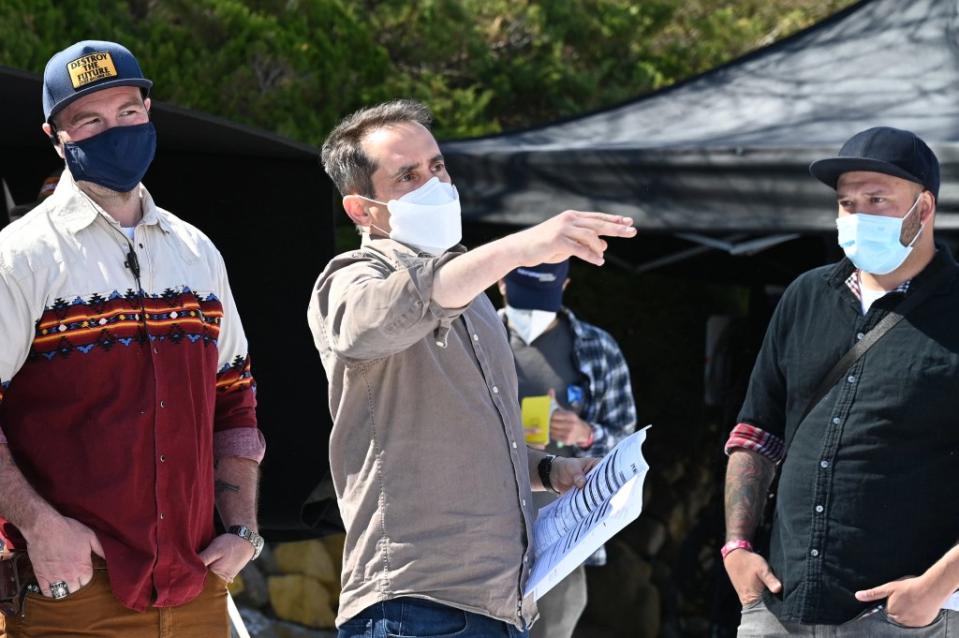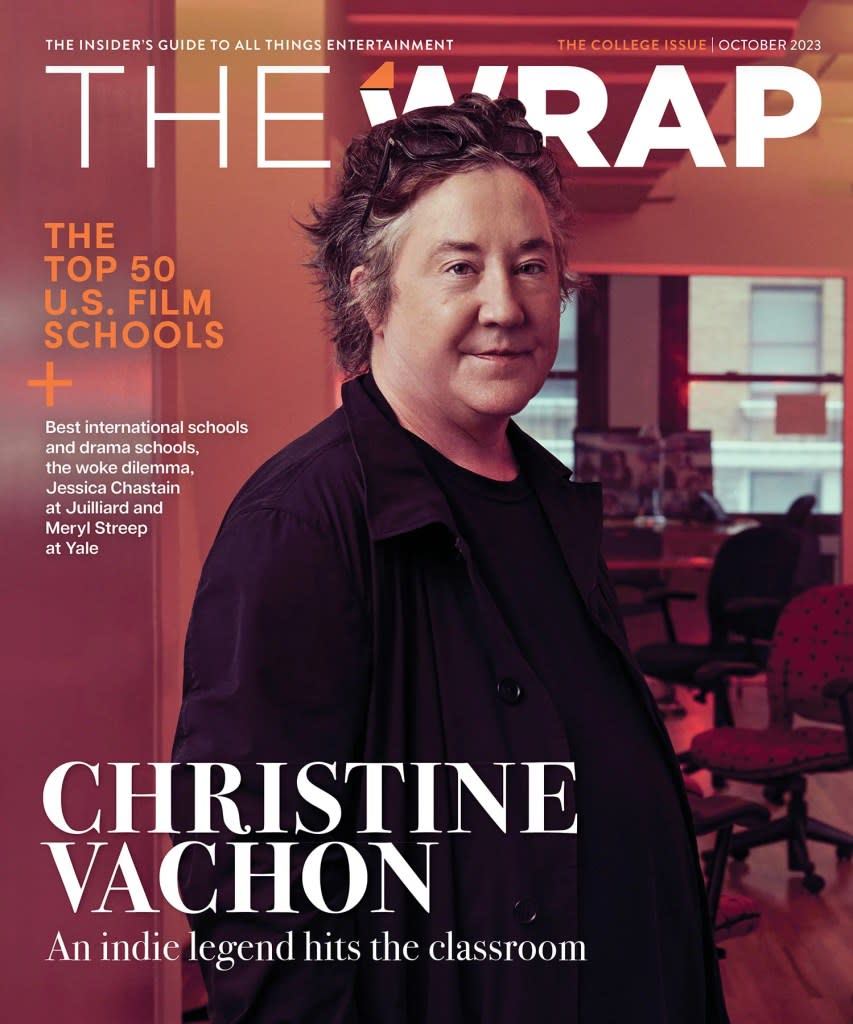How ‘Oppenheimer’ Ignited an Explosion of 70mm
A version of this story about the resurgence of celluloid presentation first appeared in the College Issue of TheWrap magazine.
Judging from the lines snaking down the street at 70mm mini festivals taking place everywhere in the past few years — from NYC’s Paris Theater to Chicago’s Music Box Theatre to L.A.’s American Cinematheque theaters — one thing is abundantly clear: The love for celluloid is everlasting. But aside from the proper showcasing of “Oppenheimer,” “Licorice Pizza” and—and if you’re lucky, movies such as “Nope” and “Last Night in Soho” (and on the small screen, the beloved HBO series’ “Succession” and “Euphoria,” both film-shot programs), is the ongoing passion for celluloid reflected in current film school curriculum? In the age of digital everything, are future cineastes learning more about the tactile art of tape-handling and editing their work on Steenbecks?
Quite possibly more than you might think. Many institutions still regularly offer courses studying celluloid, particularly 35mm, including New York City’s The New School and Potsdam’s The Konrad Wolf Film University of Babelsberg, and New York University’s graduate film program makes it an essential for first-year students, not to mention a study-away program every year in Prague that specializes in 35mm coursework. “You know, we never stopped it,” says NYU Associate Dean Kanbar Film & Television professor Michael Burke, “we love the rigor in the training of it that’s required for film.” Adds Burke’s colleague, Rosanne Limoncelli, Director of Production for Film and New Media at the Kanbar Institute at NYU’s Tisch School of the Arts, “It’s not required like it is in the grad program, but the undergrad students also have the opportunity. They take a cinematography class, they can do Super 16mm, they can continue on celluloid if they want to, or they can mix and match.”
Since becoming dean of the University of North Carolina School of the Arts in 2021, Deborah LaVine has observed an uptick in students’ interest in celluloid. “Students love the materialism of it, they love the image that is produced on film, whether it’s black-and-white or color, whether it’s 16mm or 35mm,” she said. “And if it weren’t for the price, I think we would see many, many more student films made on celluloid.”
Ah, yes. The price. Shooting on film can be prohibitive on a student budget, considering the going rate of about $100 per 100 feet of 16mm film stock. Compare that to the cost of laboratory and equipment insurance fees universities can tack on (close to $1000 a semester in some cases), which and it’s easy to understand why cost alone can be an insurmountable hurdle. (The estimated cost of a student film can end up being upwards of $30,000 in many cases.)
Chapman University graduate film student Ben Lu loves celluloid, but he has been learning his craft primarily on digital since he was an undergraduate in Taiwan. This is not inherently a bad thing, since one of his cinematic heroes, a two-time Oscar-winning director of photography who received his 16th Academy Award nomination last year, has embraced digital.
“Roger Deakins, around 2010, totally transformed from film to digital after shooting with the Arri Alexa (camera),” Lu said. “And (“Knives Out,” “Poker Face”) cinematographer Steve Yedlin, in a presentation, conducted numerous rigorous tests, controlling and operating the variables between digital and film. He showed digital and film side by side, the same exact same shots, and no one could tell the difference.”

But like all beautiful things, film stock is fragile and can wither away if not rigorously protected by archivists, who are integral to the cinematic ecosystem but are not as common as they once were. “Every archivist I know, a major part of their career is constantly re-justifying their existence,” said Matt Jones, associate curator of UNCSA’s impressive film archive, home to more than 30,000 assets including original film prints, trailers, and shorts, some of them original 70mm stock. “A lot of people talk a good game about archiving, but I don’t think it is a sexy cause that can pull down dollars very well. There are a few—your Scorseses and your Tarantinos—that really take it on as personal passion projects. But there’s not nearly enough of them to get it near where it needs to be.”
Still, the UNCSA team is adamant about keeping celluloid preservation alive. The school is so well known for its devotion to film perseveration that when Christopher Nolan’s “Oppenheimer” opened in a large number of 70mm and 70mm IMAX formats this past summer, the UNCSA archive department was tapped to train projectionists, since most non-repertory cinemas nowadays only use digital projection. (Jones and his colleagues have also been involved in recent 70mm presentations of Nolan’s “Dunkirk” and Tarantino’s roadshow presentation of “The Hateful Eight.”) “I always tell people when training them here, your first loyalty is to the print.” Further evidence of the school’s commitment: LaVine indicated that UNCSA, like NYU has currently, is looking into beginning a Master’s program for film archiving as soon as next year.
For Lu, Oliver Stone’s 1991 opus “JFK” is a great example of the power of celluloid, with its mix of various film stocks, sometimes within the same scenes, to tell the film’s panoramic tale. He hopes that interest in the artform continues, even if the current 70mm craze fades. “I feel like we have to preserve that history, but not be obstinate about that at the same time,” he said.
And Jones would love to give audiences a greater understanding about what the archival process means. “There’s a pretty baked-in misconception lots of people have where they use ‘archival’ as a synonym for ‘remastered’ and think, ‘Oh, it will be so much better than what we normally see,’” he said. “The truth is, an archival print is going to have all the scratches and the flaws of the lifetime of this print. I mean, you can have fantastic equipment with a very knowledgeable expert projectionist, and it can still go sideways at any time because you’re talking about a moving object that’s pulled through this mechanism. “But I guarantee you,” he added, “in those moments, no one is more interested in getting that show back on track than the projectionist.”
Read more from the College Issue here.
The post How ‘Oppenheimer’ Ignited an Explosion of 70mm appeared first on TheWrap.



